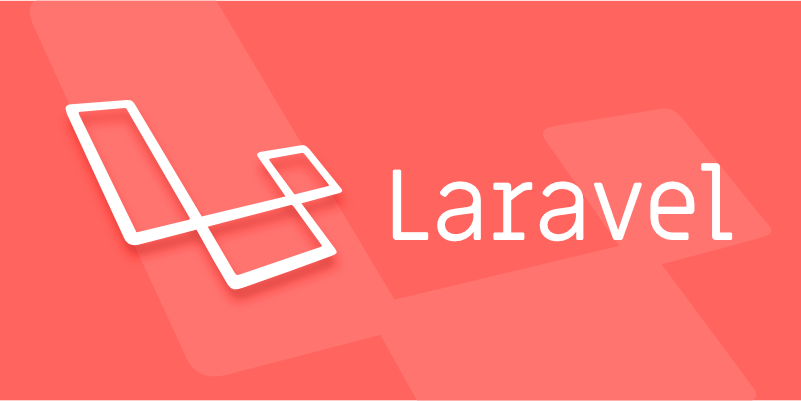Adding multilingual support to a Laravel application
The core methods for Laravel applications to implement multilingual support include: setting language files, dynamic language switching, translation URL routing, and managing translation keys in Blade templates. First, organize the strings of each language in the corresponding folders (such as en, es, fr) in the /resources/lang directory, and define the translation content by returning the associative array; 2. Translate key values through the \_\_() helper function call, and use App::setLocale() to combine session or routing parameters to realize language switching; 3. For translation URLs, paths can be defined for different languages through prefixed routing groups, or route aliases in language files can be dynamically mapped; 4. Keep the translation keys concise in the Blade template and use Laravel's support for placeholders and plural forms to improve translation flexibility. Together, these steps create a clear structure and easy to maintain multilingual system.

Adding multilingual support to a Laravel application isn't too complicated, but it does require some planning and setup. The core idea is to make your app able to serve content in multiple languages based on user preference or browser settings.

Laravel has built-in localization features that you can use right out of the box — no need for extra packages unless you want more advanced functionality.

Setting up language files
The first thing you'll want to do is organize your language strings. Laravel uses the lang directory for this. Each language gets its own folder (like en , es , fr ), and inside each folder, you create PHP files that return associated arrays of key-value pairs.
For example:

/resources/lang/en/messages.php /resources/lang/es/messages.php
Each file might look like this:
// en/messages.php
Return [
'welcome' => 'Welcome to our site!',
]; // es/messages.php
Return [
'welcome' => '¡ Bienvenido a nuestro sitio!',
]; You can then display these messages using the __() helper function in views or controllers:
<h1>{{ __('messages.welcome') }}</h1>This method keeps your strings organized and makes switching between languages easier later.
Switching between languages dynamically
To let users switch languages, you'll typically set a session variable or use a route parameter like /es/home . Laravel doesn't handle this automatically, so you'll need to write a bit of logic.
A common approach is to create a middleware that checks the URL prefix or a cookie/session value and sets the app locale accordingly.
Here's a basic example of how to do it via a controller or middleware:
App::setLocale($locale); // $locale could be 'en', 'es', etc.
You can also add routes for switching the language:
Route::get('/language/{locale}', function ($locale) {
App::setLocale($locale);
session(['locale' => $locale]);
return redirect()->back();
});And in your view, show links for available languages:
@foreach(['en', 'es', 'fr'] as $lang)
<a href="{{ url("/language/$lang") }}">{{ strtoupper($lang) }}</a>
@endforeachMake sure to check the session or user preference early in the request lifecycle so the correct language loads before rendering views.
Translated URLs and routes
If you want your URLs to be translated (eg, /about becomes /sobre in Spanish), things get a little trickier. Laravel doesn't support translated route names directly, but you can define separate routes for each language.
One way to manage this is by using route groups with different prefixes:
Route::prefix('en')->group(function () {
Route::get('/about', [PageController::class, 'about']);
});
Route::prefix('es')->group(function () {
Route::get('/sobre', [PageController::class, 'about']);
});Alternatively, you can store translations of route slugs in language files and map them dynamically. But that requires more complex routing logic and possibly a database lookup if the slugs are dynamic (like blog posts).
Keep in mind: translated URLs improve SEO for each language version, but they take more maintenance.
Managing translation keys in Blade templates
When working with Blade templates, it's best to keep your translation keys short and describe. For example:
{{ __('auth.login') }}Avoid putting entire sentences directly in the template — it makes managing translations harder over time.
Also, if you're dealing with pluralization or placeholders, Laravel supports that too:
__('messages.items', ['count' => $items->count()])
In your language file:
// en/messages.php
'items' => '{0} No items found.|{1} One item found.|[2,*] :count items found.'This helps when your app needs to display slightly different text depending on context or data.
Basically, setting up multilingual support in Laravel comes down to organizing your language files, handling locale changes, and deciding whether you need translated URLs. It's not overly complex, but it does require attention to structure and consistency.
The above is the detailed content of Adding multilingual support to a Laravel application. For more information, please follow other related articles on the PHP Chinese website!

Hot AI Tools

Undress AI Tool
Undress images for free

Undresser.AI Undress
AI-powered app for creating realistic nude photos

AI Clothes Remover
Online AI tool for removing clothes from photos.

Clothoff.io
AI clothes remover

Video Face Swap
Swap faces in any video effortlessly with our completely free AI face swap tool!

Hot Article

Hot Tools

Notepad++7.3.1
Easy-to-use and free code editor

SublimeText3 Chinese version
Chinese version, very easy to use

Zend Studio 13.0.1
Powerful PHP integrated development environment

Dreamweaver CS6
Visual web development tools

SublimeText3 Mac version
God-level code editing software (SublimeText3)

Hot Topics
 Working with pivot tables in Laravel Many-to-Many relationships
Jul 07, 2025 am 01:06 AM
Working with pivot tables in Laravel Many-to-Many relationships
Jul 07, 2025 am 01:06 AM
ToworkeffectivelywithpivottablesinLaravel,firstaccesspivotdatausingwithPivot()orwithTimestamps(),thenupdateentrieswithupdateExistingPivot(),managerelationshipsviadetach()andsync(),andusecustompivotmodelswhenneeded.1.UsewithPivot()toincludespecificcol
 Adding multilingual support to a Laravel application
Jul 03, 2025 am 01:17 AM
Adding multilingual support to a Laravel application
Jul 03, 2025 am 01:17 AM
The core methods for Laravel applications to implement multilingual support include: setting language files, dynamic language switching, translation URL routing, and managing translation keys in Blade templates. First, organize the strings of each language in the corresponding folders (such as en, es, fr) in the /resources/lang directory, and define the translation content by returning the associative array; 2. Translate the key value through the \_\_() helper function call, and use App::setLocale() to combine session or routing parameters to realize language switching; 3. For translation URLs, paths can be defined for different languages through prefixed routing groups, or route alias in language files dynamically mapped; 4. Keep the translation keys concise and
 Sending different types of notifications with Laravel
Jul 06, 2025 am 12:52 AM
Sending different types of notifications with Laravel
Jul 06, 2025 am 12:52 AM
Laravelprovidesacleanandflexiblewaytosendnotificationsviamultiplechannelslikeemail,SMS,in-appalerts,andpushnotifications.Youdefinenotificationchannelsinthevia()methodofanotificationclass,andimplementspecificmethodsliketoMail(),toDatabase(),ortoVonage
 Understanding and creating custom Service Providers in Laravel
Jul 03, 2025 am 01:35 AM
Understanding and creating custom Service Providers in Laravel
Jul 03, 2025 am 01:35 AM
ServiceProvider is the core mechanism used in the Laravel framework for registering services and initializing logic. You can create a custom ServiceProvider through the Artisan command; 1. The register method is used to bind services, register singletons, set aliases, etc., and other services that have not yet been loaded cannot be called; 2. The boot method runs after all services are registered and is used to register event listeners, view synthesizers, middleware and other logic that depends on other services; common uses include binding interfaces and implementations, registering Facades, loading configurations, registering command-line instructions and view components; it is recommended to centralize relevant bindings to a ServiceProvider to manage, and pay attention to registration
 Configuring and sending email notifications in Laravel
Jul 05, 2025 am 01:26 AM
Configuring and sending email notifications in Laravel
Jul 05, 2025 am 01:26 AM
TosetupemailnotificationsinLaravel,firstconfiguremailsettingsinthe.envfilewithSMTPorservice-specificdetailslikeMAIL\_MAILER,MAIL\_HOST,MAIL\_PORT,MAIL\_USERNAME,MAIL\_PASSWORD,andMAIL\_FROM\_ADDRESS.Next,testtheconfigurationusingMail::raw()tosendasam
 Managing database state for testing in Laravel
Jul 13, 2025 am 03:08 AM
Managing database state for testing in Laravel
Jul 13, 2025 am 03:08 AM
Methods to manage database state in Laravel tests include using RefreshDatabase, selective seeding of data, careful use of transactions, and manual cleaning if necessary. 1. Use RefreshDatabasetrait to automatically migrate the database structure to ensure that each test is based on a clean database; 2. Use specific seeds to fill the necessary data and generate dynamic data in combination with the model factory; 3. Use DatabaseTransactionstrait to roll back the test changes, but pay attention to its limitations; 4. Manually truncate the table or reseed the database when it cannot be automatically cleaned. These methods are flexibly selected according to the type of test and environment to ensure the reliability and efficiency of the test.
 Strategies for optimizing Laravel application performance
Jul 09, 2025 am 03:00 AM
Strategies for optimizing Laravel application performance
Jul 09, 2025 am 03:00 AM
Laravel performance optimization can improve application efficiency through four core directions. 1. Use the cache mechanism to reduce duplicate queries, store infrequently changing data through Cache::remember() and other methods to reduce database access frequency; 2. Optimize database from the model to query statements, avoid N 1 queries, specifying field queries, adding indexes, paging processing and reading and writing separation, and reduce bottlenecks; 3. Use time-consuming operations such as email sending and file exporting to queue asynchronous processing, use Supervisor to manage workers and set up retry mechanisms; 4. Use middleware and service providers reasonably to avoid complex logic and unnecessary initialization code, and delay loading of services to improve startup efficiency.
 When to use Contracts versus Facades in Laravel
Jul 08, 2025 am 12:45 AM
When to use Contracts versus Facades in Laravel
Jul 08, 2025 am 12:45 AM
In Laravel, the choice of Contracts and Facades depends on the dependency structure and coupling degree. Contracts are interfaces for easy testing and replacement; Facades provides static syntax sugar, suitable for simple scenarios. 1.Contracts are used to clarify dependencies, improve testability and follow SOLID principles; 2. Facades are suitable for situations where concise syntax is pursued without frequent replacement implementations; 3. Helper functions are more concise but are not conducive to testing and maintenance. Comprehensive use of both is better: use Contracts for complex logic, and use Facades for simple operations.







